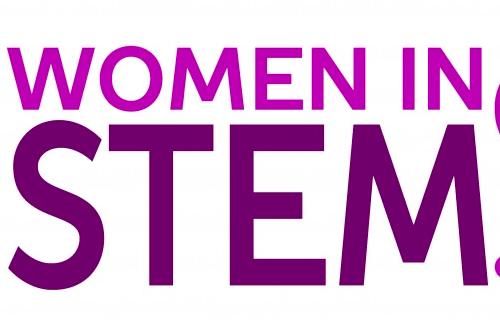Celebrating Women in STEM

March 27, 2019
It is no little known fact that women are less recognized for their accomplishments in society. Whether it is the past or present, prejudice has been seen and experienced by women everywhere, no matter what area of study. The STEM (science, technology, engineering, mathematics) field in particular is notoriously male dominated, its household names being primarily men. However, in celebration of women’s month, Stamford High School would like to shine a light on women in STEM who challenged and broke boundaries despite the odds, driving innovation and expanding knowledge for the next generation.
Ada Lovelace was an English mathematician who created a program for the first prototype of a digital computer. According to Encyclopaedia Britannica, she has been called the first computer programmer. She was both educated privately by tutors and self educated, but was helped by Augustus De Morgan, the first mathematics professor at the University of London. She was interested in Charles Babbage’s machines in 1833, her most notable act being translating and annotating an article written by Italian mathematician and engineer Luigi Federico Menabera, “Notions sur la machine analytique de Charles Babbage”. Although Babbage only built a small part of the Analytical Engine, but Lovelace’s efforts have been remembered. The early programming language Ada was named after her, and the second Tuesday in October was named Ada Lovelace Day, as a nod to women in the STEM field.
Chien-Shiung Wu was a Chinese American physicist instrumental to the Manhattan Project, a research and development that took place in World War II that made the first nuclear weapons. According to the Atomic Heritage Foundation. she helped to develop the process for separating uranium into U-235 and U-238 isotopes and improved Geiger counters for measuring nuclear radiation levels. She studied physics at a university in Shanghai and enrolled at the University of California, Berkeley where she completed her PhD. Unable to find a research position, she taught physics at Princeton University and at Smith College. In 1944, she joined the Manhattan Project at the Substitute Alloy Metals (SAM) Lab at Columbia University with a focus on radiation detectors. After the war, Wu was offered a position at Columbia and started investigating beta decay, making the first confirmation of Enrico Fermi’s theory of beta decay. In 1965, she was approached by theoretical physicists Tsung Dao Lee and Chen Ning Yang to make an experiment to prove that their theory that the law of conservation of parity did not hold during beta decay. Wu’s experiments proved that identical nuclear particles did not always act alike. Lee and Yang won the Nobel Prize in physics for theory in 1957, but Wu’s contributions were not recognized. Despite this, she continued to make significant contributions and won several awards and honors along the way. She served as the first female president of the American Physical Society, won the National Medal of Science, the Comstock Prize, the first honorary doctorate awarded to a woman by Princeton University, and the Wolf Prize in Physics. Her research helped answer questions about blood and sickle cell anemia and her book Beta Decay still stands as a reference for nuclear physicists today.
Katherine Johnson was a mathematician instrumental to NASA’s space missions, calculating and analyzing the flight paths of spacecrafts. Her work helped send astronauts to the moon. From a young age, it was apparent that she was a savant with numbers. According the Encyclopaedia Britannica, at the age of ten, she started attending high school. She graduated from West Virginia State College at the age of 18, earning her bachelor’s degrees in mathematics and French. In 1939, she was chosen to be one of the first three African American students to enroll in West Virginia University’s graduate program. In 1953, she started working at the National Advisory Committee for Aeronautics’ (NACA) West Area Computing unit, where a group of African American women did manual calculations for the program’s engineers. Known as the West Computers, they analyzed test data and provided mathematical computations essential for the success of the early space program. After NACA was incorporated into the newly formed National Aeronautics and Space Administration (NASA), she was a member of the Space Task Group, where she co authored a paper with one of the group’s engineers about putting a spacecraft into orbit. This marked the first time a woman in her division received credit as an author of a research report. She is most known for her role in NASA’s Mercury program, calculating the path for Freedom 7, the spacecraft that put the first U.S astronaut in space. John Glenn personally asked her to prove that the electronic computer had planned his flight path correctly, trusting only her mind with his safety. She calculated where and when to launch for the Apollo 11 mission and later on worked on the space shuttle program. She received numerous awards and honors, one of which being the Presidential Medal of Freedom. In 2016, NASA named a building, the Katherine G. Johnson Computational Research Facility, in her likeness.
Grace Hopper, known as the “Queen of Code”, was an American mathematician and rear admiral in the U.S. Navy who pioneered the development of computer technology. According to Encyclopaedia Britannica, she helped to devise UNIVAC I, the first commercial electronic computer, and naval applications for COBOL, a popular coding language in the business community. She attended Vassar College for her B.A. and Yale University for her M.A. and Ph.D. After teaching mathematics at Vassar, she joined the Naval Reserve, became a lieutenant, and was assigned to the Bureau of Ordnance’s Computation Project at Harvard University. There, she worked on Mark I, the first large-scale automatic calculator which came before electronic computers. In 1949, Hopper joined the Eckert-Mauchly Computer Corp., where she designed an improved compiler, which translated a programmer’s instructions into code. Her division later developed the Flow-Matic, the first English language data processing compiler. She was elected a fellow of the Institute of Electrical and Electronic Engineers, was named the first computer science Man of the Year by the Data Processing Management Association, was awarded the National Medal of Technology, and was awarded the Presidential Medal of Freedom.
These women and so many more have driven innovation in society to places unparalleled with their respective accomplishments. Without women in STEM, technology as it is today would not exist. From Ada Lovelace to Grace Hopper, generations of women have created and fueled one of the most male dominated industries to date, carving their names in history despite the odds pinned against them. Women’s month is not only a commemoration, but a statement of defiance to those who have pushed them to the back into the shadows. It stands today as a message to women everywhere, proclaiming that Yes We Can. We have. And we will.



